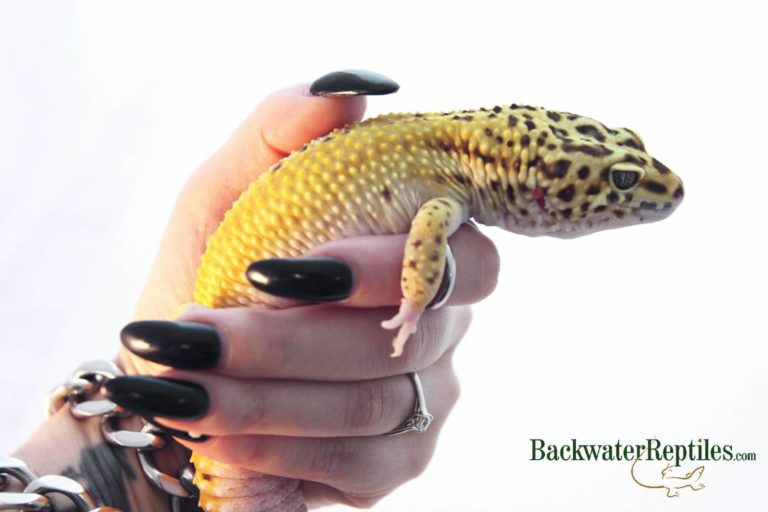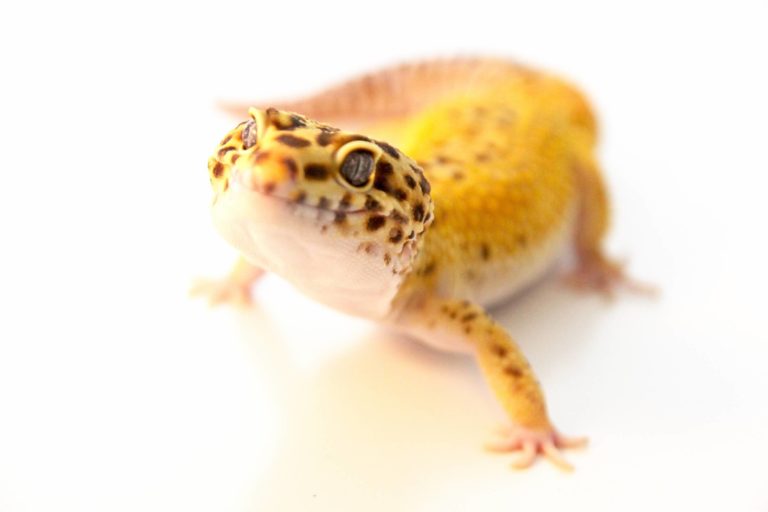Do Leopard Geckos Need UV Lighting?
Reptiles are pretty much little solar powered creatures. Did you know that many species even require full spectrum ultraviolet lighting in order to thrive in captivity? However, this is not the case for all species as different animals have different health requirements.
Leopard Geckos, one of the most popular lizards kept as pets, actually do not require special UV lighting in order to be healthy! That makes one less thing that owners need to worry about.
In this short and simple blog article, we’ll answer the following questions:
-What exactly is UV light?
-Why do some pet reptiles need it to be healthy?
-Why don’t Leopard Geckos need UV light?
-Where can I find more information on caring for my own pet Leopard Gecko?

Commonly Asked Questions About Leopard Geckos and UV Lighting
What exactly is UV light? Why do some pet reptiles need it to be healthy?
The sun’s natural rays are composed of several different types. The types that are particularly important to reptilian health are UVA and UVB rays. Rather than launch into a scientific explanation of the many different types, we are just going to focus on UVA and UVB rays. Some reptiles need both types while some only need one type.
UVA rays are visible light rays, meaning that they can be seen and sensed. These rays are important to reptilian vision. In fact, some species of reptile can even see in more color variety than humans can! This is essential when it comes to detecting prey or finding a mate in the wild.
UVA lighting is also very important in helping reptiles set their internal clocks. Whether or not light is present helps them regulate their temperature, know when to sleep or be awake, go through breeding and shedding cycles, and even know what season of the year it is.
UVB rays are important to many reptiles because they stimulate reptiles’ immune systems and promote healthy bone growth. UVB rays help reptiles synthesize vitamin D3 which in turn makes sure that their bones do not grow warped due to being too soft. This is particularly important to developing jawbones and limbs.
There are many types of UV lights available when it comes to fulfilling your reptile’s needs. There are UVA lamps, UVB lights, and full-spectrum lights as well. What type of bulb(s) you will need for your pet reptile will vary based on the species. We recommend that you do your research thoroughly prior to purchasing any reptile so that you can be sure you are fulfilling its needs.
Unfortunately, no matter how hard we try, it’s impossible to exactly duplicate the composition of the sun’s rays when creating a reptile’s habitat. We have to do our best to mimic and provide supplementation when necessary. The exception to this is if you create an outdoor home for your herp. Then, of course your pet will be getting natural sunlight!

Why don’t Leopard Geckos need UV light?
Leopard Geckos are now known to be crepuscular rather than strictly nocturnal. This means that they are able to monitor and regulate the amount of time spent in sunlight and therefore their exposure to UVB rays in the wild. They are very sensitive to night and day cycles and should be provided with a light that simulates natural day and night hours regardless of what exact type of rays it emits. We recommend investing in a timer that you can schedule according to the season – more “daylight” hours in summer time and fewer in winter time.
If leopard geckos don’t need much or any UVB, how do they synthesize vitamin D3 in captivity and maintain healthy bones, skin, and immune systems? Well, many owners use a vitamin D3 supplement on their gecko’s food specifically to avoid any issues that could occur from lack of vitamin D3 such as metabolic bone disease.
If you are concerned about your gecko getting enough vitamin D3, you can always invest in a full-spectrum or UVB bulb just to cover all of your bases. However, if you go this route, we do recommend that you make sure there are plenty of places within the enclosure for your pet Leopard Gecko to hide. This will ensure that it does not feel overly stressed by the lighting and that it can always decompress if it so chooses. Remember, reptiles are all about self-regulating their temperature and body needs, so the more options you can provide, the better.
Bottom line: many breeders do not use a special UVB bulb and their animals thrive with D3 supplementation. While it is not a strict necessity to provide UVB lighting, we’re finding that many owners are now preferring to provide it simply due to the amount of debate surrounding the subject.
Where can I find more information on caring for my own pet Leopard Gecko?
There is so much information out there on caring for Leopard Geckos! In fact, it’s almost overwhelming. A simple Google search will provide tons of care sheets, tips, recommendations, and forums for discussing the husbandry requirements of these amazing little lizards.
What is our personal recommendation on where to find a reliable care sheet? We advise that you check out our Leopard Gecko care sheet that is written based upon our years of experience breeding and housing these adorable creatures, as well as our articles about various leopard gecko morphs and what do leopard geckos eat?

Conclusion
So, what did we learn?
Essentially, there is much debate surrounding the topic of whether or not Leopard Geckos do better in captivity if you provide them with special UVB lighting.
We have found that they do not require it to thrive, however we recommend that reptile owners make the choice on their own whether they prefer to provide supplemented vitamin D3 or a specific light where the gecko can bask.
Ultimately, what’s most important is that you keep a close eye on your gecko and watch for any signs of poor health including lack of interest in food and water, lethargy, or odd mobility habits. If you notice any of these signs, we’d advise trying out some changes in your gecko’s habitat, including the method through which your gecko absorbs vitamin D3.
Don’t miss our other articles on:
Do leopard geckos regenerate their tail?
How to to set up a leopard gecko habitat
.
